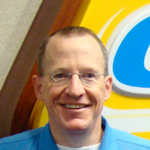The Need
Over the years, a number of different organizations supporting the lesbian, gay, bisexual, transgender (LGBT) community had approached Oakmont Senior Living about the possibility of a joint property venture. None of them, however, were interested in a project that quite fit the company’s specialty as a developer of more than 35 retirement communities in the western United States, primarily California. But that got owners Bill and Cindy Gallaher thinking—what if they went ahead and established a retirement community for LGBT seniors on their own?
“Creating one of these facilities takes a lot of capital and expertise, and most of the organizations interested in LGBT [advocacy] are community-minded groups that don’t have that,” says Cindy, whose firm has also created a successful facility for Chinese American seniors in Freemont, California. “We do, and we saw it as another niche market we could serve.”
As it turns out, the Gallahers were spot-on with their thinking; Services and Advocacy for GLBT Elders, a New York nonprofit that fights for LGBT seniors, says that gays, lesbians, and transgender people are routinely denied housing, and it’s common for same-sex couples to be separated when admitted to care facilities. To respond to this, Oakmont Senior Living began planning Fountaingrove Lodge in 2005, and it “has been such a long process,” Cindy says, but it’s one she’s proud of.
The Build
The planned location for Fountaingrove, a little ways north of San Francisco Bay, was perfect, given that the city is a hub for the LGBT community. The site, however, proved challenging. Situated on a golf course in Santa Rosa in the heart of Sonoma County, it was long, narrow, and heavily wooded, requiring creative design choices from the architects. Also, local codes and antibuilding sentiment delayed portions of the project unexpectedly; the environmental impact report alone took two and a half years to complete.

“We redesigned and scaled back,” Cindy says, explaining that after changes were made that would help blend the facility in with its rural setting, construction was approved. “We chose a modified Craftsman style with a more contemporary feel than Oakmont’s other facilities, which suits the site and appeals to the aesthetic sensibilities of the LGBT community.”
Ultimately, the $50 million, three-story facility was designed with 70 independent units and 20 continuing-care units located in one main building and six bungalows, all spread across a 10-acre campus. One- and two-bedroom units will be available in sizes ranging from 833 to 2,001 square feet. Homes will cost between $189,500 and $925,500, which will be refundable upon leaving, and monthly charges—covering meals and other services such as weekly cleaning and local chauffeuring—will range from $3,395 to $6,125.
Fountaingrove Lodge will also offer numerous amenities, including a care facility, a gym, a spa with a heated pool, a pet park, and a great hall with an expanded stage. “We expect the facility to be a hub for LGBT activity, and we wanted to be sure there was room for gatherings and speakers,” Cindy says.
The Branding
With design and construction under way, the latest challenge has been getting the word out. “We started marketing as soon as we started the approval process—probably four years ago—and hit all of the major gay and lesbian publications,” Cindy says. “But we’ve found that hasn’t been as effective as we’d hoped it would be because there are many gay and lesbian seniors who don’t read those publications. We’re also trying to attract people from all over the United States and are wondering how we reach them cost effectively.”
To that end, the Gallahers have hired a new marketing director to help, and they’re now doing pretty well. The first phase of construction is scheduled to open this summer, and 60 percent of the units are already sold. Cindy and Bill have learned a lot along the way. “Surprisingly, we’ve attracted a younger group,” Cindy says. “In our other communities, the average age is in the 80s. At Fountaingrove Lodge, residents who have purchased units are in their 70s.” ABQ


